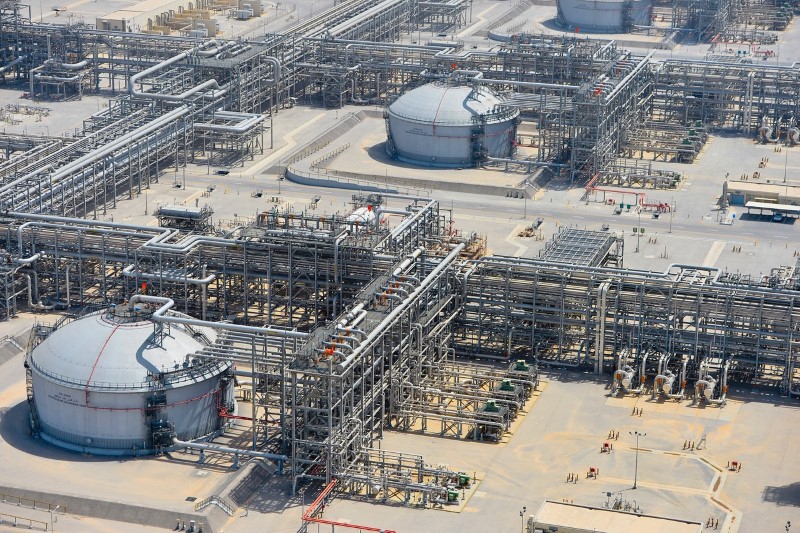(Bloomberg) -- Oil analysts expect prices to jump at least $5 to $10 a barrel Monday after a strike on a key facility cut Saudi Arabia’s production by half, pulling some 5% of world supply off the market.
Saudi Aramco lost about 5.7 million barrels per day of output after several unmanned aerial vehicles on Saturday struck the world’s biggest crude-processing facility in Abqaiq and the kingdom’s second-biggest oil field in Khurais. It could take weeks to restore normal production, according to people familiar with the matter. The Trump administration is ready to deploy the nation’s emergency oil reserves and help stabilize markets if needed.
Oil sank 2.1% in London to $60.22 a barrel last week and 3% in New York to $54.85, amid concerns that slowing demand growth may augur another supply glut. Geopolitics wasn’t much of a concern in traders’ minds, but that’s all changed now.
“There is almost no geopolitical risk priced into oil markets that are focused solely on the macro and trade narratives,“ Joseph McMonigle, senior energy analyst at Hedgeye Risk Management LLC, said in a note.
While analysts agree that prices will spike initially, the duration of the outage is key. Saudi Arabia has millions of barrels stored in locations around the world, which they can draw down to replace the lost production. A rally could also be tempered if the U.S. and other countries release oil from their strategic reserves to ease the shortfall.
- “We can expect oil prices to be $5/bbl higher when it opens,” said Andy Lipow, president of Lipow Oil Associates LLC in Houston. “The events over the weekend show the vulnerability of oil facilities in the Mideast.”
- ClearView Energy Partners LLC sees potential for prices to rise $10 a barrel, assuming a three-week shutdown, according to a note to clients. If damage turns out to be extensive and the outage is extended, they expect a loosening of OPEC+ supplies and a coordinated release of strategic reserves from the U.S. and elsewhere.
- “Brent could go to $80 tomorrow, while WTI could go to $75,” said Sandy Fielden, director of research for Morningstar Inc. “But that would depend on Aramco’s 48-hour update. The supply problem won’t be clear right away since the Saudis can still deliver from inventory.”
- “The initial move higher will depend on the strength of short-covering,” Ole Hansen, head of commodities strategy at Saxo Bank A/S in Copenhagen, said by email. “We finished last week on a weak note after monthly oil market reports pointed to a prolonged supply glut.”
Brent may rise more than West Texas Intermediate, as the potential for release from theStrategic Petroleum Reserve and growing domestic production could restrain the U.S. benchmark. Bloomberg Intelligence sees Brent climbing back toward levels last seen in April.
What Bloomberg Intelligence Says
“Brent should regain much of the premium lost to West Texas Intermediate over the past few months. Rapidly increasing U.S. supply, the likelihood of releasing crude from the Strategic Petroleum Reserve and potential for a ban on exports should provide a greater boost to the benchmark.”
Mike McGlone, commodity strategist
Heavy, high-sulfur crudes will also likely be in demand due to the type of oil that was taken off the market:
- Andy Lipow on Dubai: “I would expect sour crude differentials to get stronger given the Saudis exports are heavier and have higher sulfur crudes”
